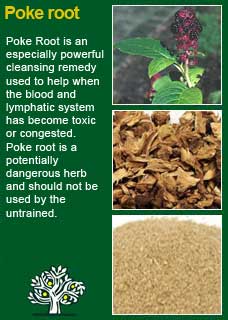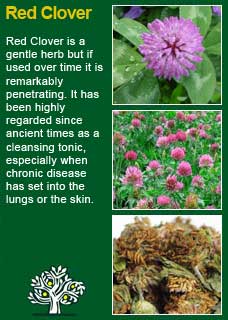
|
|
||||
| Our Pages ABOUT CONSTITUTIONAL MEDICINE
|
The leaves of Cleavers, a straggling, short-lived plant that pushes itself through gaps in bushes and hedges and finds any piece of available earth to take a foothold on and then grow sticky leaves to catch a hold of any passer-by in order to spread itself some more. Cleavers is not the most popular plant in the human world, but it is most certainly a survivor!
In reviewing the literature on Cleavers, one has to come to the conclusion that this herb has an astonishingly powerful reputation for such an unprepossessing plant! In the ancient world Cleavers was used to treat cancer. Gerard wrote of Cleavers as a marvellous remedy for the bites of snakes, spiders and all venomous creatures. One of the founders of Roman medicine, Galen, described it as a cure for obesity writing 'it can make fat folk lean'. Cleavers is an old treatment for one of the toughest of all skin problems; psoriasis, it has even thought to be able to help dissolve small kidney stones! Lyle writes 'this herb is a soothing, relaxing, diffusive diuretic. It materially increases the urine and relieves irritation. It is valuable in scalding urine, and irritable bladder and urethra. Clivers acts as a solvent of stone in the bladder. In hot infusion this is a diaphoretic and may be used to good advantage in fevers where there is a necessity to favour a good free outward circulation and it relieves the nervous system' King's Dispensatory writes: 'Cleavers is a most valuable diuretic, and will be found very beneficial in many diseases of the urinary organs, as suppression of urine, calculous affections, inflammation of the kidneys and bladder, and in the scalding of urine in gonorrhoea. Growth or deposits of a nodular character in the skin or mucous membranes are regarded as indications for its use. It has also been found useful in many cutaneous diseases, as psoriasis, eczema, lichen sclerosis & cancer' The British Herbal Pharmacopoeia (BHP) describes the actions of Cleavers as 'diuretic & miuld astringent and says it is indicated for 'dysuria (painful or difficult urination), lymphadenitis (inflamation of the lymph nodes) & psoriasis and specifically indicated for 'enlarged lymph nodes' The BHP recommends doses of 2-4 grams or by infusion and the extract at a dose of 2-4 mls. Thomas Bartram writes that the actions of Cleavers include 'lymphatic alterative and detoxifier, diuretic, astringent tonic, non-steroidal anti-inflamatory, anti-obesity, adaptogen, anti-neoplastic. He suggests uses for it including enlarged lymph nodes, especially cervical neck nodes, cystic and nodular changes in the glands, nodular goitre, dry skin disorders, psoriasis etc. Bartram suggests doses of 1 tsp to a cup of boiling water, infused for 5-15 minutes or 2-4 mls of the extract.
~ The constituents Monotropein, asperuloside, acumin, aucubin, protopine, harmine, (±)-vasicinone, (-)-l -hydroxydeoxypeganine, (-)-8-hydroxy-2,3-dehydrodeoxypeganine, p-hydroxybenzoic acid, chlorogenic acid, silicic acid, caffeic acid, p-coumaric acid, flavonoid, anthraquinon, cholesterol, campestrol, stigmasterol, sitos-terol, DELTA[5]-avenasterol, DELTA[7]-stigmasterol, DELTA[7]-avenasterol, asperulosidic acid, and 10-deacetylasperulosidic acid have all been isolated from the aerial parts of Galium aparine (Deliorman, D., Çaliþ, Ý., and Ergun, F. Iridoids from Galium aparine. Pharmaceutical Biology 2001;39(3):234-235) (Sener, B. and Ergun, F. Isolation and structural studies on the alkaloids of Galium aparine L. GUEDE J Fac Pharm Gazi 1988;5:33-40) ~ Traditionally, clivers has been used as a diuretic, as a treatment for epilepsy, and for cleansing the kidneys, blood, and lymph system (Temizer A. and Sayin F, Ergun F et al. Determination of total flavonoid in various Galium species by differential pulse polarography. J Fac Pharm 1996;13:97-104) Cleavers may have anti-inflammatory effects and it has been used to treat mastitis in animals (Lans, C., Turner, N., Khan, T., Brauer, G., and Boepple, W. Ethnoveterinary medicines used for ruminants in British Columbia, Canada. J Ethnobiol Ethnomed 2007) ~ The authors, titles and the 'where-and-when' published of a handful of further studies and articles on Cleavers are listed in a PDF found here
For some years now, against this proven and safe way of herbalism, there has been a rising tide of excessive caution and scare-mongering in many parts of the world. The same authorities that, not so long ago, decried herbal medicines as ineffectual, have now taken up a different adversarial position; that they are dangerous substances that should only be prescribed by Doctors, who of course have zero training in them. Unfortunately, the same unnecessary fear and worry has crept into many natural health websites and popular publications on herbs. Herbs that we have safely used for thousands of years, that have no reports of adverse reactions in the medical literature despite widespread use by millions of people, are suddenly described as contraindicated because of something that should have been seen as completely unimportant, or at the utmost a merely theoretical concern, such as a laboratory study on one of the herb's constituents to use an all too common example. I wonder sometimes if the writers of such articles feel that the herb will be more deserving of respect if it is thought to be a little bit dangerous, in other words more like a drug than something that has simply come out of the earth and been used by ordinary people for generations beyond count. There is just so much misinformation about herbal medicine on the internet now. Ludicrous claims and cautions abound in equal measure; it seems like one group are trying to make money out of the public whilst the other are busily trying to scare them off. I have to believe that the kind of reader who takes the time to read pages on herbs that are as extensive as this one is much less likely to be swayed by marketers or misinformers. I hope that you will keep your wits about you if you get conflicting opinions from people who have never really got to know these herbs, who have never worked with them, or learned how to use them safely and effectively. I want to remind you that the reason that herbs can never be patented and owned by any individual or corporation is because they are, and always will be, the People's medicine. They belong to all of us and it is my great hope in sharing this work that you will learn how to use them wisely for yourself, and the people you care for. Be safe, but do not be afraid.
In combination with other great cleansing herbs, I've seen Cleavers help people get out of some difficult corners in their health and have developed a lot of trust and respect for it. Including on the same basis of how it grows as a plant; never underestimate the scrappy little guy that gets places by dint of not being afraid of taking on things much bigger than itself! I think that Cleavers is a plant that it is wise to get to know in person to really appreciate just what it can do. For anyone studying herbal medicine, or perhaps has a keen interest in learning more about these great plant allies for their own reasons, I recommend the ancient practice of taking a small dose of the tea or tincture of Cleavers and then, with an open and attentive mind, watching how it makes you feel within. What you can experience by doing this is a sense of the herbs 'action' i.e. what it is actually doing in the body. Without wanting to overly influence your own experiment should you do this I will say that in the case of Cleavers this will likely not be an obvious 'hit you in the face' kind of sensation but that you may well get a visceral sense of how deeply it can move congested 'blocks' in the body. Cleavers is exactly the kind of remedy that can be best appreciated in such an 'experiential' way. Further to this, if you would like to learn more about the ancient art of pulse testing, a simple but powerful way to ask the intuitive intelligence of the body for its responses to a herb by feeling the pulse whilst giving a tiny dose by mouth, read here I think that it was this kind of experience of the herb in action that led it to being used for such terribly serious problems as cancer and why it was even believed to help fat people become lean! I see that Cleavers has the ability to get into hot spots of the body, places where the ‘chi’ or energy has become stuck and stagnant and then get that block to move! As with so many of our herbs much of the 'art' is not just getting the right remedy but also getting the right dose. Cleavers is quite generous in the sense that if you take more than you need that it will not do you any harm but there is a threshold beyond which taking bigger doses does no further good in chronic problems. For most people, I feel that upper level to be around just 3 or 4 mls of the tincture in a day and perhaps around 3 or 4 grams a day if used in a tea. It is perfectly possible that considerably smaller doses, a half or less of that, will work just as well for the person who is more sensitive to its action. In any case these are dose levels for someone using Cleavers over a reasonable time frame, at least a few weeks. An important point to grasp with Cleavers is that the longer you use it the better it works. To stimulate the healing process Cleavers combines perfectly with the other great blood and lymphatic cleansers of herbal medicine, namely Calendula, Red Clover and Poke Root.
Much of the information here about the traditional uses of Cleavers is consistent with the model of thinking whereby one may treat problem A with plant B. There is value in this approach, especially in how it helps us pass on useful knowledge to one another, but it falls short in one vital area; and that is that people are not all cut from the same cloth! Something that works brilliantly for one person may do less for another -- why is this? Part of the reason is that people vary in their constitutions as to whether they are either hotter or cooler and, at the same time, either dryer or damper. This useful and rather fascinating subject is introduced further here Another big part of using the right herb when it is most needed comes from understanding the need to treat what is going wrong for the person that had led up to their getting a health condition. In this light, Cleavers can particularly offer its benefits when a cleansing action is needed in the 'cycle of healing', more about this here
Please understand that I cannot advise you, including on products or dosage, without seeing you in person in my clinic but for ideas
on how you might find a good herbalist in your area read here |
|
|
© 2011 R.J.Whelan Ltd










